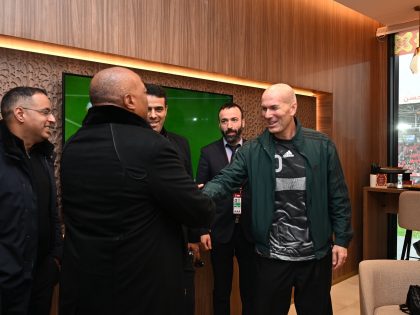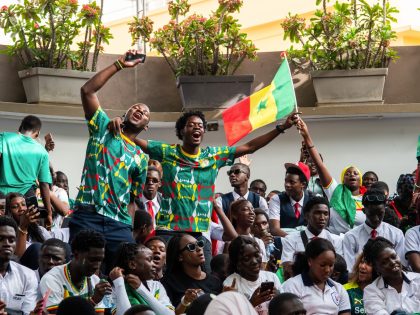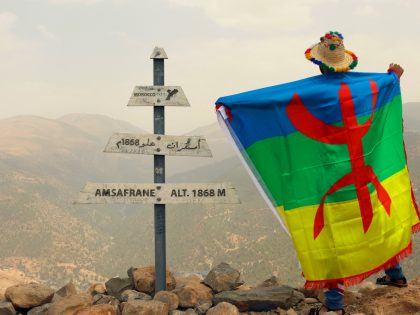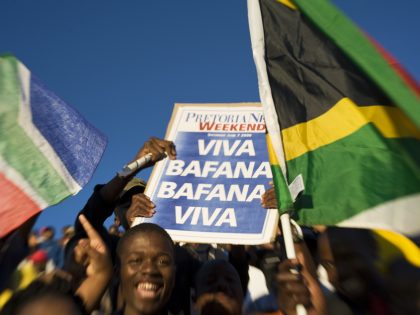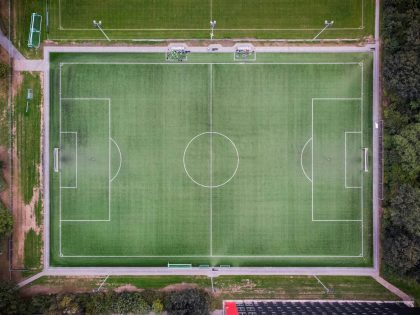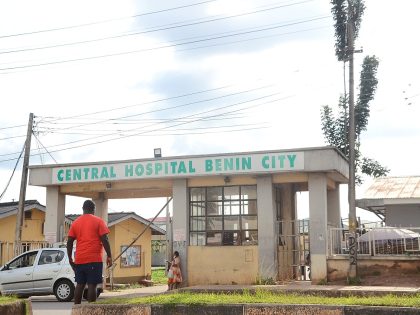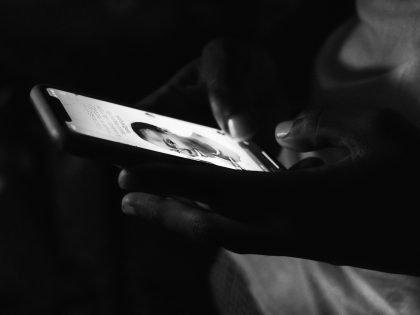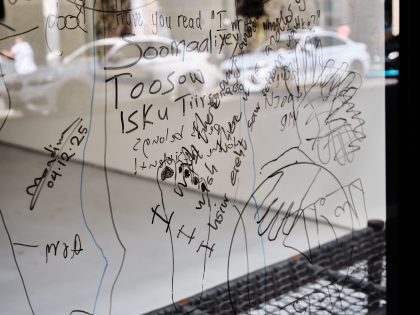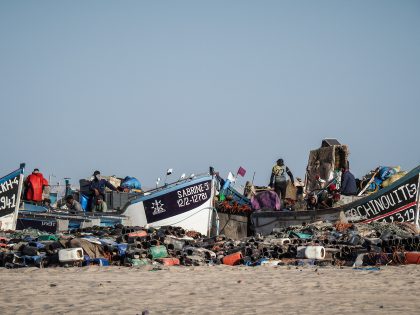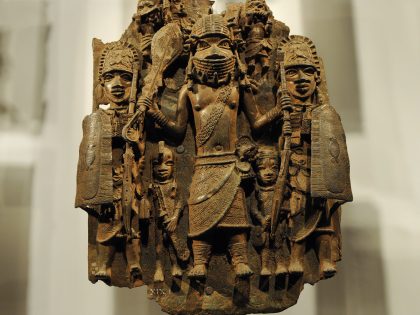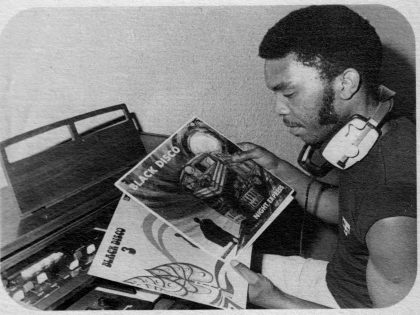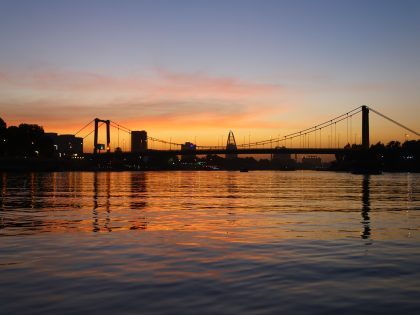Africa is a Great Country to Photograph
An interview with Swedish photographer Jens Assur about his exhibition, "Africa is a Great Country," about representation of Africa and visual clichés in general.

Swedish photographer and visual artist Jens Assur has spent ten months producing an exhibition of 40 enormous-size, large-format photographs chronicling structural patterns in the everyday life of twelve of Africa’s rapidly-changing urban centers, currently showing at the Liljevalchs konsthall in Stockholm. And by some coincidence, he’s gone for a title of similar intent as this blog’s: the whole thing is titled “Africa is a Great Country”. We got the opportunity to talk to Jens Assur about the exhibition, the criticism it has received and about broader issues on the representation of Africa and visual clichés in general.
What was your idea with the title of the exhibition?
It plays on us Swedes’ preconceived notions of what Africa is. No-one would think to conflate, say, the economies of China and Afghanistan into one big picture, and yet it happens all the time when talking about Africa, as if it wasn’t incredibly diverse. And yes, of course I’m trying to get people to react, that’s part of the point.
Talking about reactions, what do you think about the opinion piece by two researchers at the Nordic Africa Institute about your exhibition, criticizing your exhibition for conflating Africa into one whole?
I welcome their article. They bring out their knowledge and their experiences, which is important. But of course they’ve misunderstood the intended irony of the title.

What generally are you trying to show?
From the beginning, we wanted to tell another side of Africa: taking it seriously, not taking pictures of pretty women in colourful clothing, bustling markets and cute animals. An Africa where 1/4th of the population now is middle class, where in Kenya 55% of all financial transactions are done by mobile phone; an Africa where giant building projects happen all the time, often backed by hugely escalating Chinese investment. There are enormous new residential projects, nearly always closed-in gated communities where first the land is bought, then the walls go up, and then the buildings. Road systems, often built in the 40s and 50s that are unable to cope with an enormous increase in car traffic and congestion. And societies where cars are becoming a necessity, with huge out-of-town shopping centres – Gaborone for instance has practically become like Los Angeles. To an extent, it’s a reflection on our cities here too, what’s happened, is happening and will happen in the future.
Generally, the exhibition has quite a positive view on what’s happening; a narrative of poor people pulling themselves up. But I don’t think my job as an artist is to give answers. Society is neither straight-forward nor simple. Still, we constantly had to ask ourselves questions: do we just want to show the richest and most successful examples? Probably not. And if we mix it up, do we risk saying nothing of any importance whatsoever? At one point we also suddenly realized there were almost no women in the pictures. Is it because we consciously chose masculine places, building sites, harbors? Or is it because women are relatively absent in many African cityscapes?
Why have you chosen to use this enormous photographic format, 18 x 13 centimeter negatives producing 2,5 x 3,5 meter pictures?
To an extent it’s about letting the viewer come into the image. It also allows us to use an incredible level of detail, with longer exposure times giving a huge, sharp depth-of-field, so the viewer can take in the whole structure, all the parts, all the details. This also allows occurrences to be slow and dignified, unhurried. Many photo journalists claim that you have to come right up close to individuals to create a sense of understanding, but instead we’ve taken a step back, further out, and used the large-format camera’s ability to tilt and shift to be capture large wholes, to show complete structures.

The very beginning of the genesis of the exhibition was way back in 1992, after my first journey to Africa as a photo journalist, to Mogadishu in the middle of the civil war. I took a picture of a nurse cleaning the grenade wound of a young boy at Keysaney hospital, and it was published in Sweden’s biggest newspaper. And it got a lot of attention, it generated a lot of discussion. That picture became proof to me that you can communicate with pictures alone, and I ended up going back to Africa again and again as a newspaper photographer over the next decade: to Angola, Mozambique, South Africa, Congo, Côte d’Ivoire and of course the horror that was Rwanda during its civil war. My reality for so many years was watching death and suffering, and taking pictures of it.
I don’t regret taking those pictures at all. They were important pictures, and I think each one was individually true. But to a large extent it’s only these pictures of death and suffering, and pictures of the picturesque Africa travel magazine, that ever get to represent the continent in media here. Swedes still think of the Ethiopian famine and Live Aid when you mention Africa. So perhaps taken together, these pictures as a whole don’t give a true image of a diverse continent of 54 countries, you know? Anyway, for much of the 2000s I’ve been focusing on our own society, including in my big project Hunger, which is about how our societies have come to treat consumption like a bulimic treats food, stuffing itself and then purging it away. I took pictures of the global flow of goods and the huge, sprawling mega-cities, with an enormously growing global middle class. And Africa has entirely become part of this. So I had the idea to make an exhibition of African cities, from Cairo to Johannesburg, from Monrovia to Dar es Salaam, and the structural changes that happen to them. I’m the first to acknowledge that this only shows one part of Africa, but it’s a different one than usually shown.
The conception of the exhibition was entirely mine and Studio Jens Assur’s. I’ve had external financial backers, but they’ve not been given access to the material in advance at any time. And it’s been produced very fast for a project of this scale, to not lose the zeitgeist of what’s happening right now.

You stress the different clichés in photographing Africa. Is it difficult to avoid falling into those tired visual ideas?
Not really, I think. And I don’t want to go too far: by always avoiding the stereotypes, I risk missing opportunities to tell possible stories. If I go to an extreme, say only trying to show an Africa without problems, it will also become a stifling generalization. It’s a definite risk. That said, I’m generally uninterested in the clichés. Just this month, I specifically rejected a plan to have African drumming at the exhibition launch…
To an extent you’ve dealt with the problem of visual clichés about Africa before. For instance, in your short film The Last Dog in Rwanda, there’s a particularly drastic scene where the main character, a photographer, moves a corpse in order to try to make it fit better into a particular archetypal image.
There’s a challenge in the world of photography generally, in that a lot of people take pictures to try to affirm their own artistic view. This in turn is connected to previous works, and these works in themselves become a measuring stick whereby the pictures are judged, these previous works are seen as the truth. This is especially true of journalism, where there’s often a finished story already, a prepared mold for the narrative to fit into. In fact, some of the criticism I’ve got has been precisely that the exhibition doesn’t fit precisely into one mold, that it’s too indistinct, that it doesn’t just show the growth but other thing as well. People feel at home in clichés.
Although it’s been generally well received by the audience, I’m surprised about how little debate it has seemed to generate in the media about our image of the world and how we choose to communicate. Perhaps it’s unsurprising considering these are the same people who generally work by telling a straightforward story, and they seem to know very little about Africa and about photography. Instead, the critique seems to be almost like a sporting event: it’s about the size, sharpness and subject matter of the pictures, whether they’re too pretty, too ugly, to city-focused or not city-focused enough. It’s as if I’m on skis, hurtling down a mountain and they expect me not to knock into various hurdles.

Have you received any criticism for being, to put it crudely, a white man going on a photo expedition to Africa? Falling into that sort of form, dating back to the colonial era? Any criticism in general about the potential power issues?
Actually, no. I think that sort of issue is more interesting, and quite reasonable, a healthy line of questioning. All I can say is that I’ve had the opportunity to do this, and I’ve tried my best to communicate to Sweden the things I’ve come to understand. I just can’t let myself be stopped by this type of doubt. I don’t have any claims to be telling a complete truth, and I definitely encourage people to seek out a variety of sources.
Do you think the exhibition would have been different if you’d been a photographer from Africa?
Of course, or anyone else for that matter. Of course my cultural and social background has influenced me. Compare it to interior design: in Sweden everyone obsesses about vintage furniture, but in Los Angeles for instance they’d just look at you questioningly; there the ideal is that everything should be new and forward-looking. And it’d be different between African photographers! Imagine someone from Lilongwe compared to someone from Lagos – that’s like comparing [the small regional town] Visby to São Paolo. Africa is incredibly diverse.
So what’s going to happen to these pictures after the exhibition here in Stockholm?
One copy of the exhibition is going to be touring other Swedish art museums over the next year. Another copy will be shown in three large African cities, although I can’t quite reveal which ones yet, I hope to have it finalized before June. We’ve also had interest from other countries, so that may be happening too.
* Africa is a Great Country will be on at Liljevalchs konsthall until 2 June.

